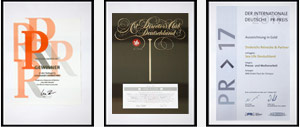Contact
DEDERICHS REINECKE & PARTNER
Public Relations Consultants
Schulterblatt 58
20357 Hamburg
Fon: +49 40 20 91 98 220
E-Mail: info@dr-p.de
PR-Agentur Hamburg
Imprint | Privacy policy
Awards

Data in Storytelling: Straight Talk or Just Useless Knowledge?
The right data makes (PR) stories strong. It creates orientation, demonstrates expertise, and gives our messages weight. In short: it often provides the evidence that what we claim for our clients is actually true. It makes stories relevant — or not. That’s exactly why we in PR need to handle data with special care.
What we as a PR agency pay particular attention to:
Ensure credibility ✅
Data without a source instantly loses value. Every figure needs a clear origin, a transparent year of collection, and — ideally — the methodology behind it. That’s why “our own customer survey” usually carries far less weight than representative studies by independent, reputable institutes or those developed in partnership with a leading media outlet.
Make it understandable 🔍
Data must be easy to grasp — and headline-ready. For your audience, clear visualizations without abbreviations, complex charts, or tables are key. For editors, however, those detailed charts can serve as valuable background. The best approach: provide both.
Never forget context 📐
Numbers need reference points or a timeframe. Without context, a distorted picture can quickly emerge. “German consumers are increasingly happy to receive second-hand Christmas gifts!” Sounds great — but only with comparative figures from previous years or even decades does that statement become truly meaningful.
Stay up to date ⏱️
Outdated data isn’t just unprofessional — it distorts reality and undermines credibility. For example, registration figures for electric cars may look completely different after a new subsidy law takes effect. Always check before publication whether the data basis is still valid, name the study’s date and context, and frame it in time.
Avoid overinterpretation ⚠️
Data can indicate trends — but not explain everything. If we read more into a number than it actually says, credibility suffers. The classic mistakes: comparing apples with oranges or drawing sweeping conclusions just because they fit the messaging brief.
The biggest pitfalls at a glance:
Good data storytelling follows clear rules.